I am a person who loves to travel, and for me, every trip, every land is always associated with one or some special dishes or drinks.
It's hard to remember Singapore without the chilli crab; how can you forget the memory of sipping uozo while waiting for a Greek chef to grill salt-crusted fish; and it's impossible to think of Normandy without including the creamy green mussels.
There are some things in Spanish cuisine that are quite interesting and very popular in the world , such as the lovely tapas in the small bars of Gran Via, Seville; the famous paella pans cooked by Valencian chefs in the seaside eateries, from rice grown in the fields around Lake Albufera; the enchanting glasses of sangria on every street, from Salamanca to Granada, from the bustling Plaza de Mayor in Madrid to the bustling La Rambla in Barcelona.
Among the foods and stories of this country, for me, jamon, or ham, or cured pork from the north and northeast of the Iberian peninsula, has always been the allure.
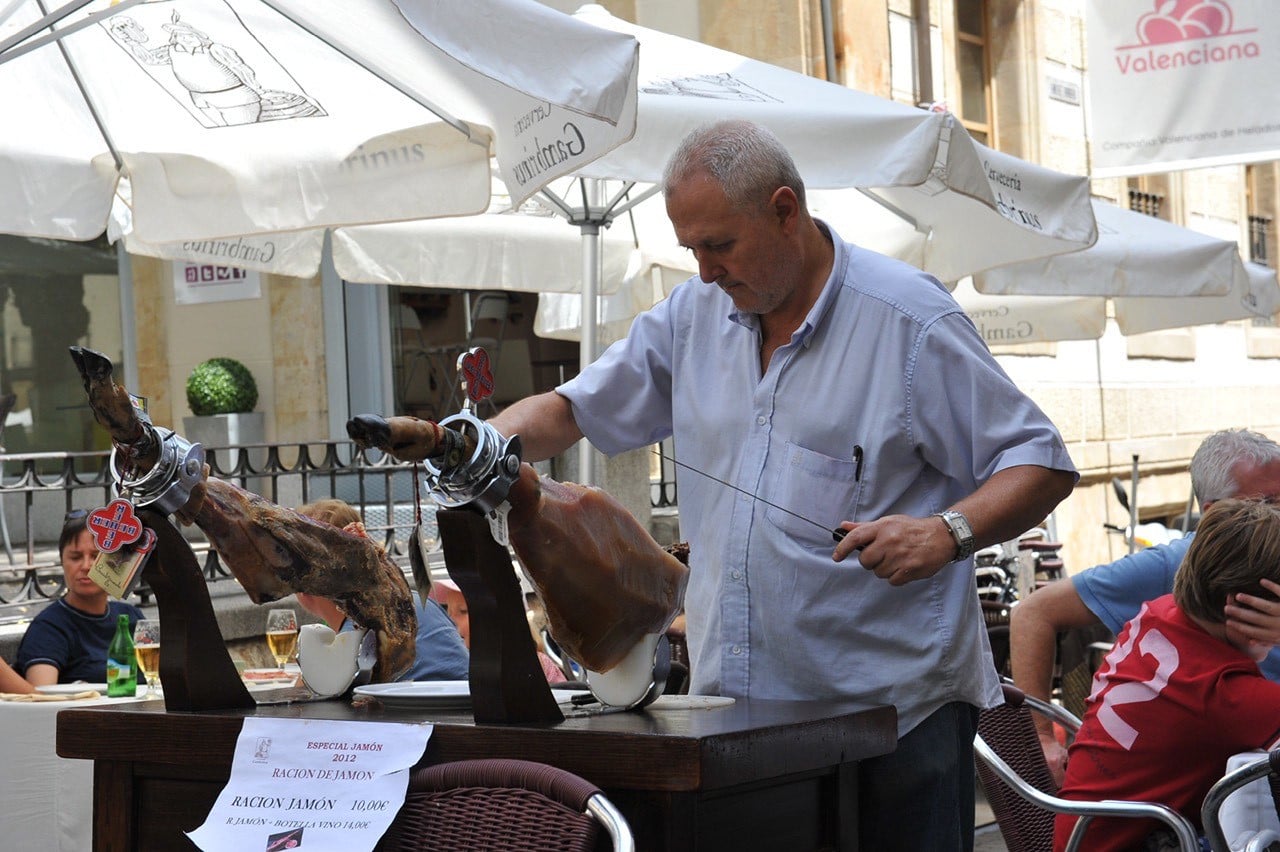
Jamon is always interesting, first of all because of the stories surrounding it. Imagine, without Iberian jamon, or the similar Italian cured pork (parma ham), the Iberians and Italians who went on long sea voyages would have had nothing to eat but bread. And then how could Marco Polo or Columbus or Vasco da Gama and their crews have made their great voyages, discovering new lands.
Jamon Iberico de Bellota was once called "the finest illegal food" by Americans, because this traditional Spanish cured meat could not meet the strict requirements of the US Food and Drug Administration (FDA).
It wasn't until 2007 that the FDA approved Iberico hams for import into the United States, and they're expensive.
Jamon Iberico is closely linked to the lands that produce it and its origin is strictly protected under Spanish regulations.
Jamon is made from the Iberian pig, also known as the black-legged pig or pata negra, which grazes in vast pastures filled with oak trees in the northern and northeastern regions of the Iberian Peninsula, which includes several provinces in Spain and Portugal.
The main breed of pig used to make Iberico was the Celtic, which lived near the Cantabrian coast of northern Spain, mutating while living in the Mediterranean forests and cross-bred with local breeds. Today, pigs used to make jamon are also cross-bred with other breeds to have larger, longer legs, most commonly the Duroc Jerseys. And so, jamon is also regulated to clearly state whether it is made from 100%, 75% or 50% Iberian genes.
The pigs are kept free range under strict stocking density rules. In the summer, the agile Iberian pigs roam the fields, travelling up to 40km a day in search of water and food. Their main food is acorns.
During this process, they develop lean legs and strong thighs, a body shape that supports the significant weight gain that occurs from October to February. The varied terrain forces the pigs to move, helping the oils from the acorns to penetrate the meat.
Vast grasslands filled with oak trees once covered nearly 90% of Spain, but are now limited to just four regions: Guijuelo (Salamanca), Huelva and Les Pedroches (both Andalusia), and Extremadura.
The most famous jamon is made from the legs, actually the thighs, of Iberian pigs. The legs, after having had some of the fat removed – about 2-3kg – are sorted by weight, chilled to harden, salted in large vats and kept in salt rooms, called Cámara de salazón, “for a day per kilogram”. That means a 15kg leg will be salted for 15 days, 10kg for 10 days. But Ibérico De Bellota gets an extra day because the extra fat needs more time.
The salazon room is so humid that the salt doesn’t soak into the meat by itself. It’s the combination of salt and moisture, and the grain size is also important. Too fine and the salt just dissolves; too large and it sinks. Each factory has its own salt and moisture, and the salt must come from the same consistent sea.
Why? It's simple, as one jamon “artisan” puts it: "Because that's what was used when we bought the factory! And if we change any of the parameters, we don't know what the effect will be three years from now."
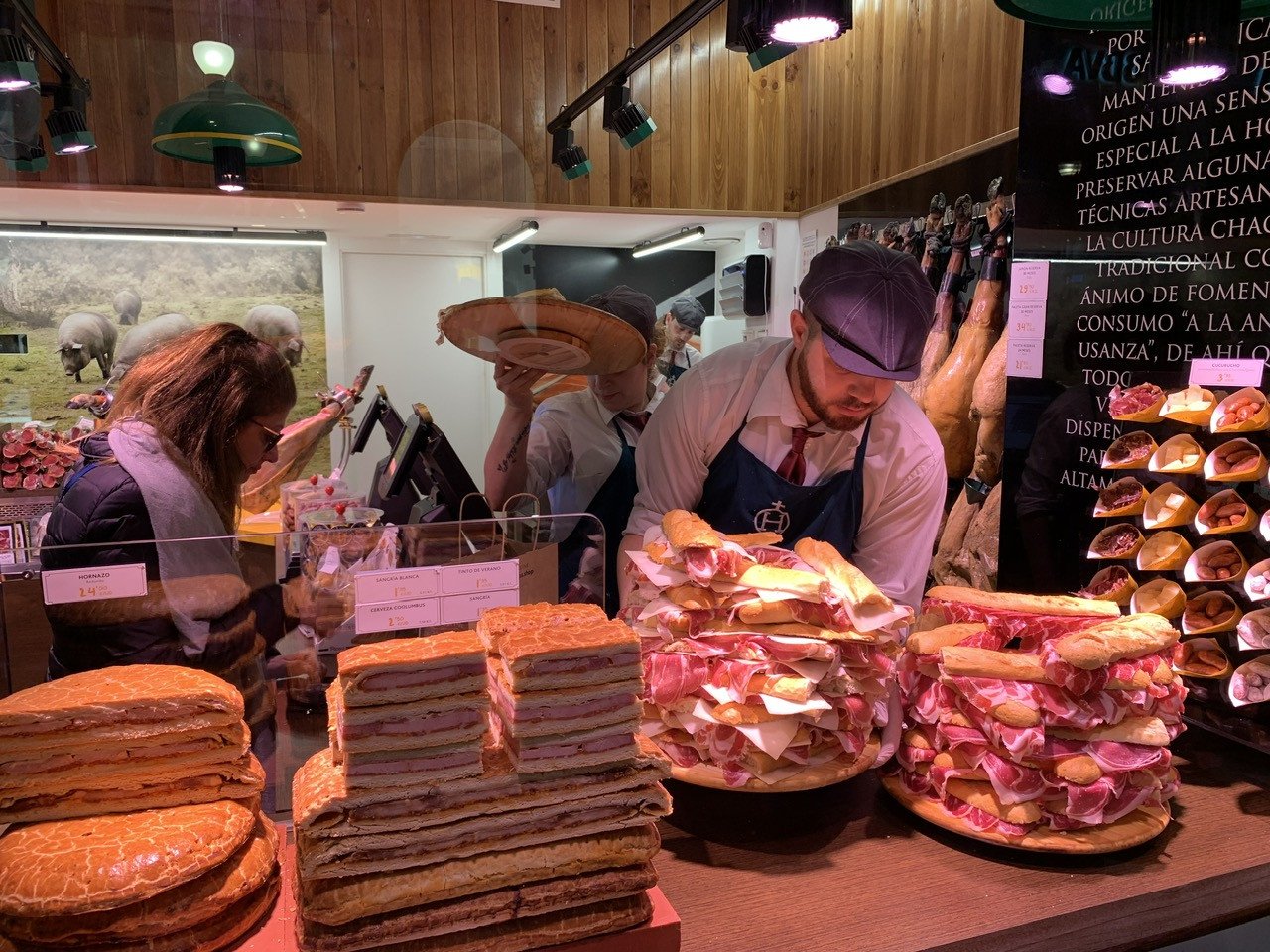
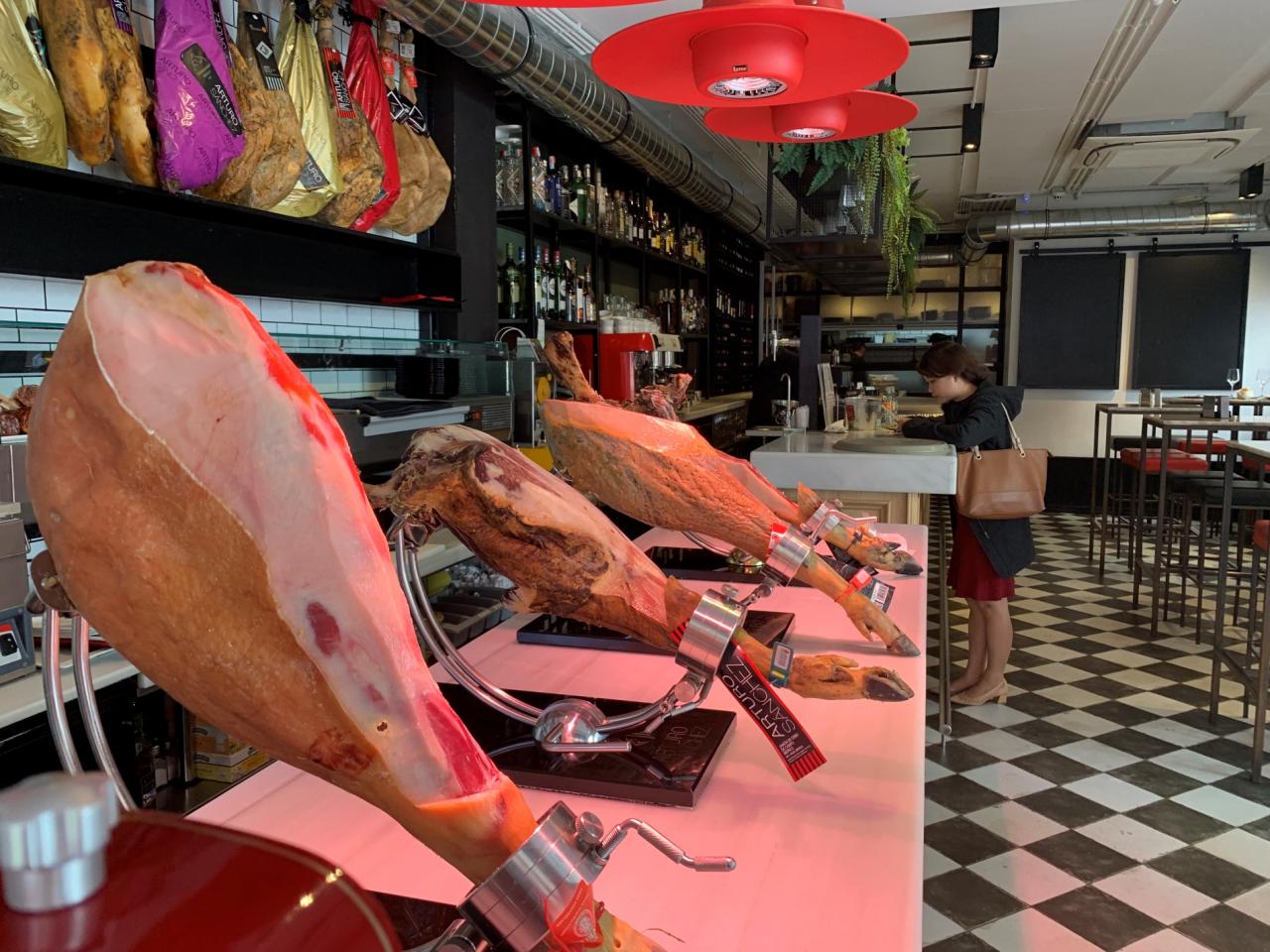
After salting, the jamon spends the next 90 days suspended in the camara de post-salado (post-salt room), where they cool down, removing any remaining moisture and developing a natural mould that coats and protects each piece. After this period, they are aged for around 3 years in the 'bellota' room, which develops a wonderful aroma - a light, nutty gamey smell.
Special ham hocks can be aged for up to 48 or 60 months, then wrapped in cloth or mesh and shipped to stores. Because the fat continues to drip off as the ham hocks hang, there is often something like an upside-down cone underneath each ham hock to catch the excess fat.
The earliest known jamon makers in Spain date back to around the 15th century, in Guijuelo (Salamanca province) where the famous dish is still made today. The most famous suppliers today almost all started making jamon from around the late 19th to early and mid 20th centuries.
Spain strictly controls the denomination of origin of this jamon. A leg of jamon sold will have full information about the breed of pig, the origin, the year of curing, the number of months of drying, and of course the name of the supplier.
There are also strict regulations on the colour of the label of the jamon, which comes in four varieties. The black label jamon '100% Ibérico De Bellota' is made from purebred, naturally raised Iberian pigs that roam freely in the fields and only eat wild acorns. The red label, or Jamón Ibérico De Bellota, is jamon made from pigs that are also free-range and eat acorns but are not purebred Iberian.
The green label, Jamón Ibérico Cebo De Campo, is jamon made from pigs that are at least 50% Iberian, free-range, but fed on animal feed. And finally, the white label, Jamón Ibérico De Cebo, is jamon made from pigs that are at least 50% Iberian, but fed on animal feed.
In terms of origin, the four most important regions (and arguably the best jamon) are Guijuelo in Salamanca; Dehesa de Extremadura (Caceres and Badajoz provinces); Jabugo, comprising 31 villages near the Sierra de Aracena reserve and Picos de Aroche in Huelva; Los Pedroches, Cordoba province.
Of course, there are other places in Spain that make it, too. In recent years, some Chinese farmers have also successfully bred Iberian pigs to make Spanish-style jamon, a departure from the way they have been making ham for thousands of years, for use in many of the signature dishes of Chinese cuisine .
Eating jamon, therefore, is eating the stories behind it. And the interesting way to eat jamon, in my opinion, is in the middle of a hot summer, mixing a jar of fragrant sangria with local fruits, then leisurely slicing a few slices to nibble on. This dish, absolutely should not and cannot be eaten in large quantities.
And a good Iberico De Bellota will be a deep red, depending on the light, somewhere between raspberry and port ruby, with pearly threads of fat.
And honestly, the best way to make this dish is to split the mouse bread, put on some slices of 100% Ibérico De Bellota Del Jabugo, add some rocket leaves....
This is not a very expensive thing in Spain and in the world. A 100% Ibérico ham De Bellota Del Jabugo from a famous ham maker in Hueva province retails for around 500 to 700 euros, with the most being under 1,000 euros. More common are other hams from other breeds, such as cebo hams from the white-legged pig, which cost less than 100 euros.
Actually, when Tet comes, leaving a ham in the house, gathering with friends, slicing a few slices to enjoy, is also an interesting thing.

Westerners love delicious food in Hanoi , eating it reminds them of their hometown

South Korea warns people to stop eating fried toothpicks
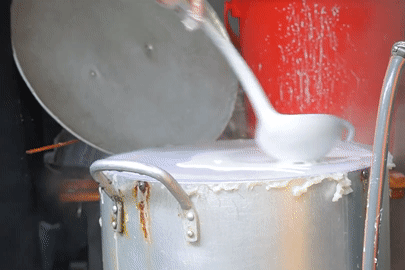
Hot rice rolls with lots of filling, full of customers, the owner works tirelessly
Source



![[Photo] President Luong Cuong attends special political-artistic television show "Golden Opportunity"](https://vphoto.vietnam.vn/thumb/1200x675/vietnam/resource/IMAGE/2025/8/22/44ca13c28fa7476796f9aa3618ff74c4)
![[Photo] President Luong Cuong receives delegation of the Youth Committee of the Liberal Democratic Party of Japan](https://vphoto.vietnam.vn/thumb/1200x675/vietnam/resource/IMAGE/2025/8/22/2632d7f5cf4f4a8e90ce5f5e1989194a)


![[Photo] Prime Minister Pham Minh Chinh chairs the conference to review the 2024-2025 school year and deploy tasks for the 2025-2026 school year.](https://vphoto.vietnam.vn/thumb/1200x675/vietnam/resource/IMAGE/2025/8/22/2ca5ed79ce6a46a1ac7706a42cefafae)











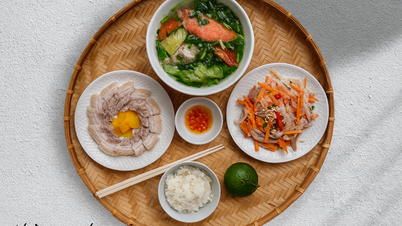



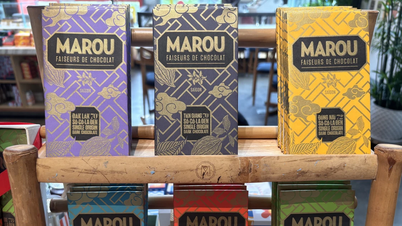


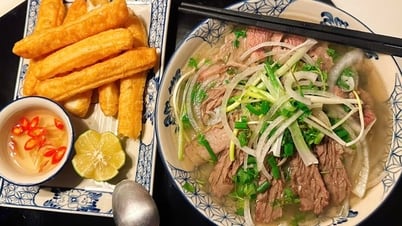




















































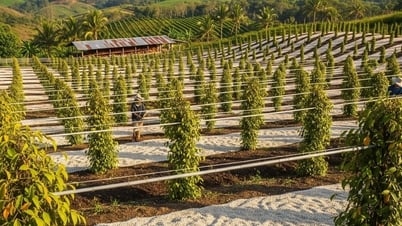

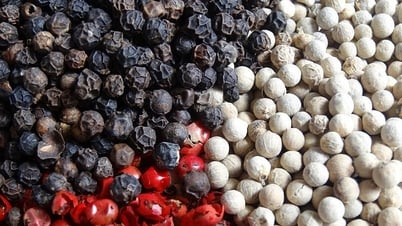

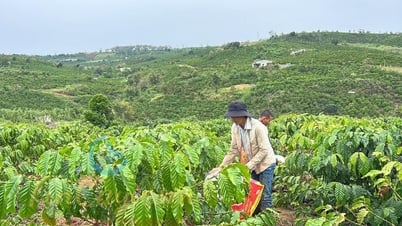
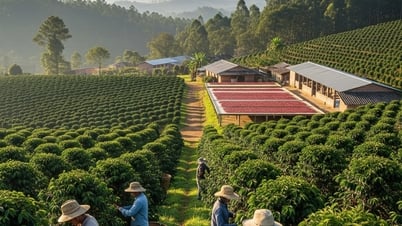














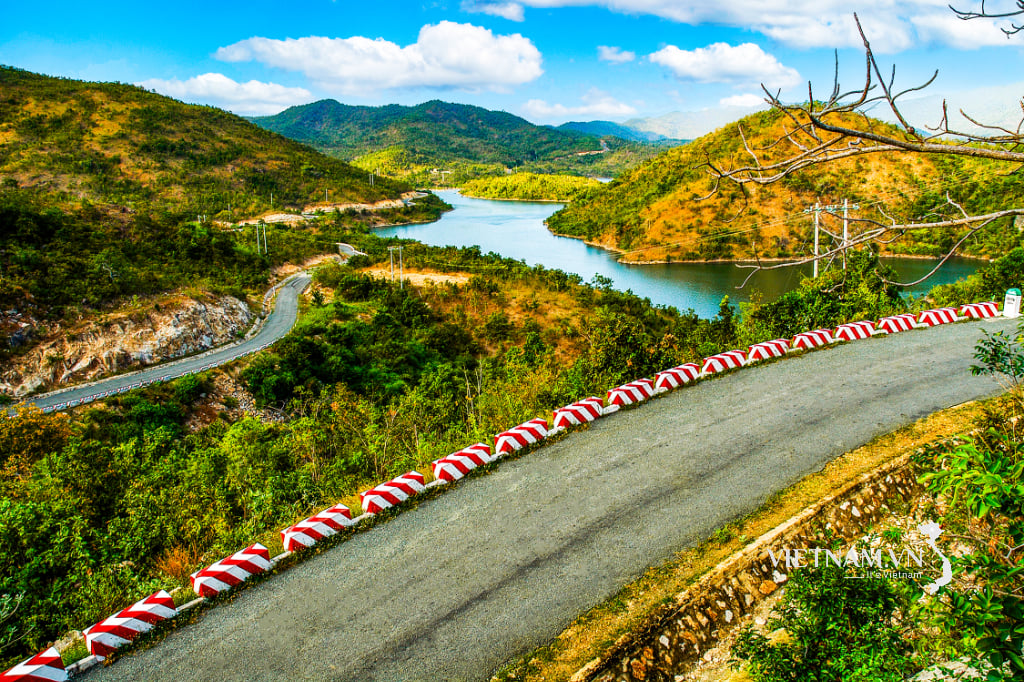


Comment (0)